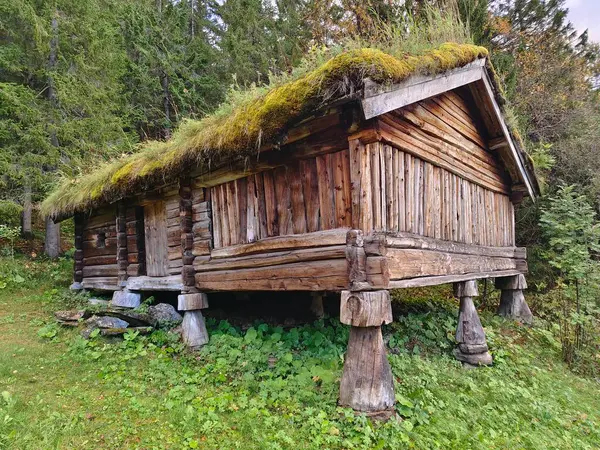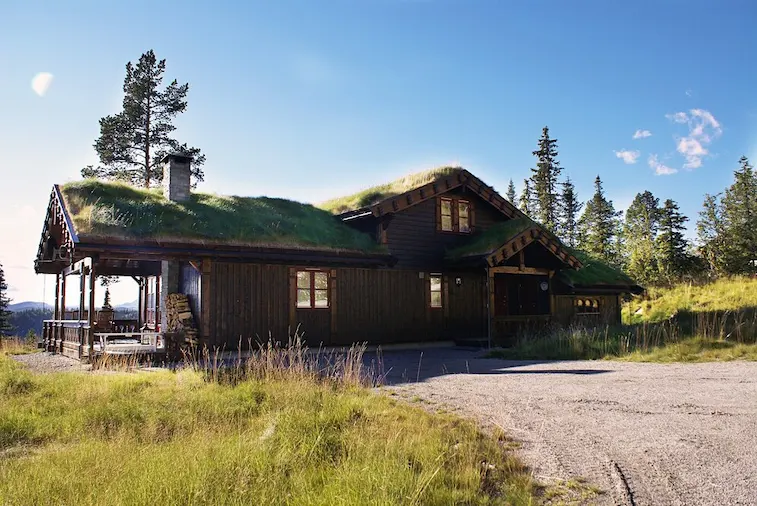The Timelessness of the Norwegian Wooden House: Harmony of Tradition and Modern Innovation

Norway, a country located in the Scandinavian region, Norway is known for its stunning natural environment, from fjords, mountains, to dense forests. The natural beauty shown is not only a tourist attraction, but also reflects the deep connection between the Norwegian people and their environment. One form of manifestation of this relationship is through traditional wooden houses which still stand strong today. These houses are not only a cultural heritage, but also a testament to the resilience and adaptation of architectural design to the harsh Nordic climate.
This time we will discuss the history, uniqueness, benefits, and how wooden houses in Norway are still an integral part of modern society today.
History of Wooden Houses in Norway

If we look at history from ancient times, Norway has indeed been abundant in natural wealth, especially wood, because building houses using wood in Norway has become a tradition and has been started since prehistoric times. The country's abundant forests make construction materials cheap and easily accessible. This wooden house construction technique developed rapidly in the Middle Ages, with the log construction method becoming the main technique. Large logs are cut, stacked and fastened without using nails, which creates a strong and long-lasting building structure.
In the 12th century, Norway was known for its wooden churches called stavkirke. This building is a symbol of Norwegian carpentry skills. One famous example is the Borgund Stave Church, which still stands today. The techniques and principles used in making stavkirke are also applied in the construction of traditional wooden houses.
The Uniqueness of Wooden Houses in Norway

There are several unique features of wooden houses in Norway that we may not realize or think about.
-
Functional and Aesthetic Design
Traditional Norwegian wooden houses are designed to withstand extreme climates. Starting from the roof which is made steep to help snow slide easily, while the wooden walls are thick so they can provide natural insulation. Many homes also have grass roofs, which are not only aesthetically pleasing but also help with thermal insulation. -
Traditional Construction Techniques
One of the distinctive characteristics of Norwegian wooden houses is the use of the notched-log method. This is a technique that ensures that the wood used is locked together tightly without the need to use nails or adhesive. This makes the house more resistant to changes in temperature and humidity. -
Material Sustainability
Because the wood used to build these houses usually comes from pine or spruce trees, which are abundantly available in Norway. Apart from that, the process of building this wooden house also requires minimal waste, so it is very environmentally friendly. -
Design Flexibility
Norwegian wooden houses have a simple but flexible design. These wooden houses can be expanded or renovated without them needing to change the basic structure, which makes them an ideal choice for modern people who still value tradition.
Benefits of Wooden Houses in Norway

There are several benefits that will be obtained, especially for Norwegian people who live in the area
-
Natural Insulation
Wood is an excellent insulating material. Because using wood, a wooden house will be able to stay warm during winter and cool during summer, so using wood as the main material in making a house will be very suitable for the extreme Nordic climate. -
Durable
With proper care, this wooden house from Norway can last for centuries. This can be seen from the fact that there are still many wooden houses in Norway that have been standing since the 18th and 19th centuries. -
Environmentally friendly
Wooden houses have a much lower carbon footprint than concrete or steel buildings. In addition, wood is a renewable resource that can be harvested sustainably. -
Aesthetics and Natural Beauty
Wood will provide a warm, natural look that modern construction materials often cannot replicate. Many people in Norway choose wooden houses because of their unique visual appeal.
Norwegian Wooden Houses in the Modern Era

Although construction technology is now improving, wooden houses remain a popular choice in Norway, both in rural and urban areas. Many modern homes combine traditional design with contemporary elements such as large windows and open layouts.
-Green Roofs Are Popular Again
Grass roofs, which were once a characteristic feature of traditional wooden houses, are now back in demand. Apart from being a decorative element, a green roof can also help maintain the temperature of the house and reduce the flow of rainwater.
-Application of New Technology
Modern wooden houses in Norway are often equipped with advanced technology ranging from solar panels and geothermal heating systems, making them more energy efficient. In addition, using processed wood with special treatment will increase the house's resistance to insect attack and moisture.
-Preservation of Historic Wooden Houses
The Norwegian government and various organizations are working hard to preserve wooden houses that have historical value. Some houses are even used as museums or tourist sites, such as in the Røros district, which is a UNESCO World Heritage Site.
Interesting Facts About Norwegian Wooden Houses

-
Oldest Wooden House
Norway has the oldest wooden house, namely Vindlausloftet, this house was built around 1167. This house still stands and is a witness to the history of wooden architecture that existed at that time. -
Røros District
The mining town of Røros is also famous for its traditional wooden houses that have existed since the 17th century. This city is a perfect example of how wooden houses can still adapt to today's modern life. -
Unique Wooden Church
Apart from Vindlausloftet, there are several villages in Norway that have wooden churches which are the center of the local community. This building shows how important carpentry skills are to constructing a building in Norwegian culture itself.
Challenges of Building a Wooden House Today

Even though Norway has many advantages, especially in its woodworking, building wooden houses also faces challenges. One of the challenges faced is maintenance which requires special attention to prevent damage caused by moisture, termites or mold. In addition, the price of high-quality wood is currently increasingly expensive, making a wooden house a fairly large investment to make.
However, some modern technologies such as engineered wood and weather-resistant coatings have helped overcome most of these challenges, thus ensuring that wooden homes remain relevant in the modern era..
Conclusion
We come to the conclusion that wooden houses in Norway are a perfect example of how tradition and innovation can work together. With a functional, aesthetic and environmentally friendly design, these houses are not only a symbol of cultural heritage, but also an architectural solution that is still relevant for the future.
Although challenges still remain, wooden houses in Norway continue to be a favorite choice for those who want to enjoy warmth, beauty and timelessness in a residence. For anyone who might want to visit Norway, these wooden houses are a true testament to how culture and nature can come together in perfect harmony.







